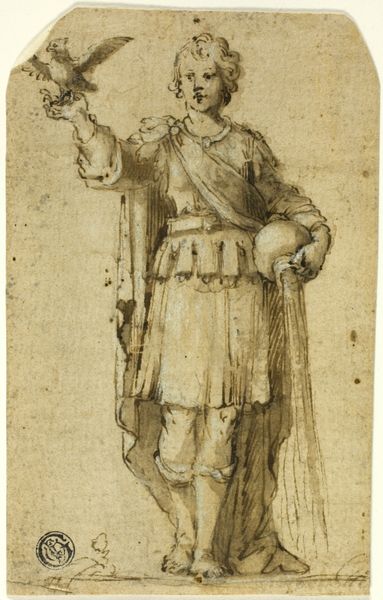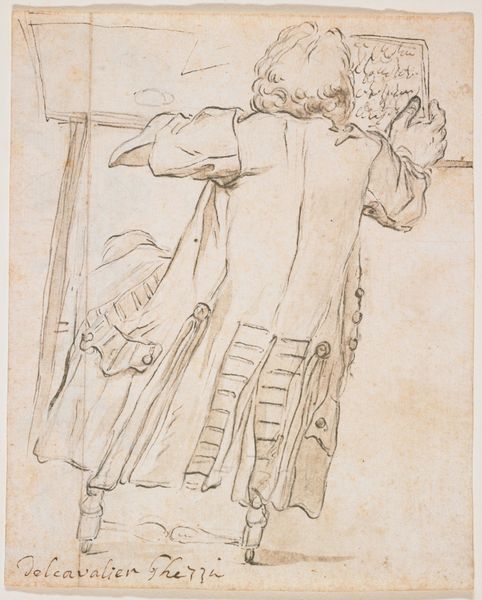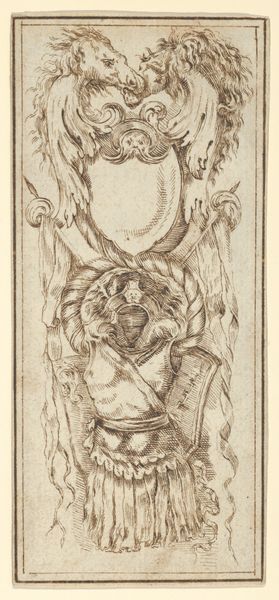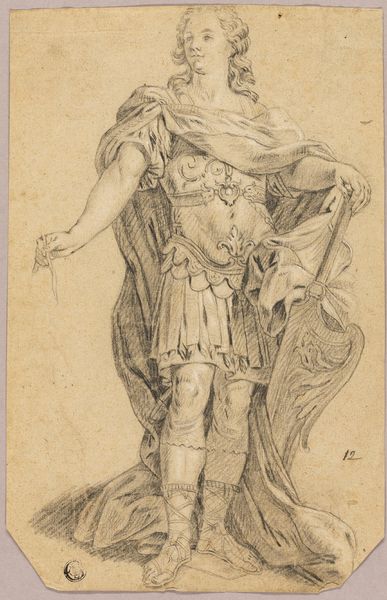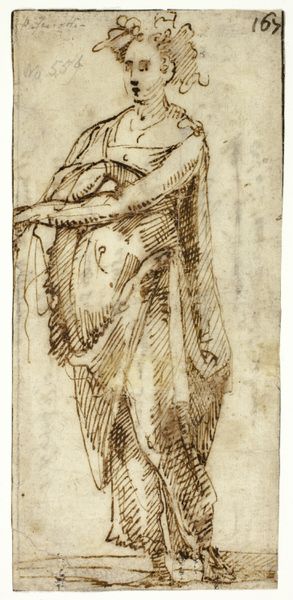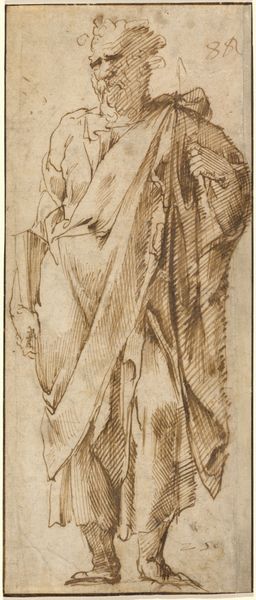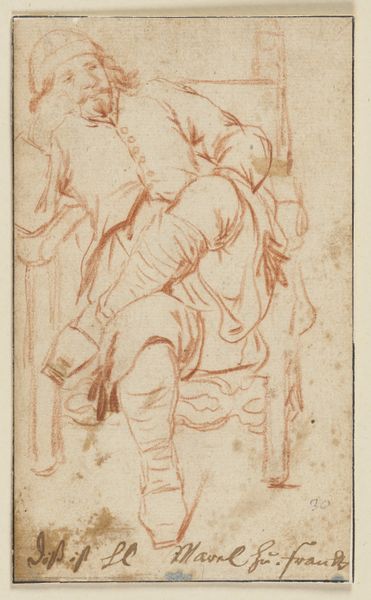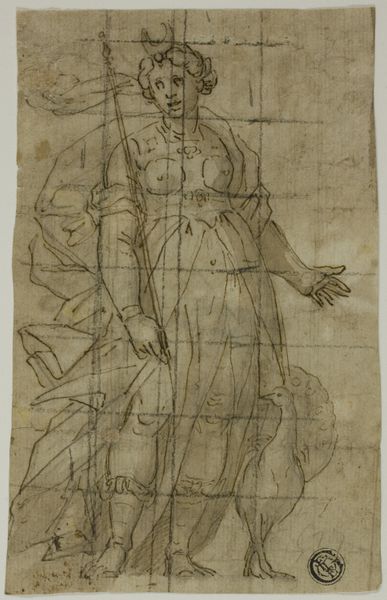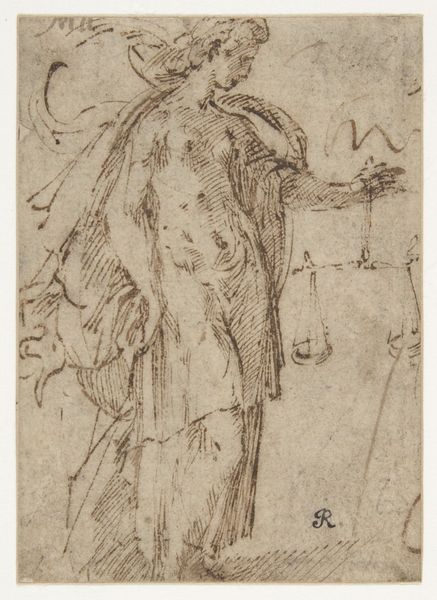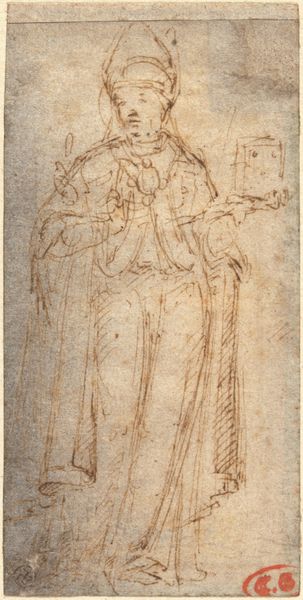
Statue of Augustus Caesar (recto and verso) n.d. (recto); Late 16th c. (verso)
0:00
0:00
drawing, print, paper, ink, chalk, pen
#
portrait
#
drawing
# print
#
pen sketch
#
pencil sketch
#
figuration
#
paper
#
ink
#
ancient-mediterranean
#
chalk
#
pen
#
history-painting
Dimensions: 117 × 49 mm
Copyright: Public Domain
Editor: Here we have a pen and ink drawing, possibly with some chalk, of the "Statue of Augustus Caesar," created at different times, with the recto dating to an unknown time, and the verso from the late 16th century. The sketchiness gives it an unfinished feel, even like we’re seeing the artistic process itself. What aspects of this piece stand out to you? Curator: What’s fascinating here is how the material of the drawing itself – pen, ink, chalk, paper – intersects with the power it represents. Augustus, of course, was a figure of immense power, symbolized by his garments. This drawing, likely a study for a print, replicates and disseminates that image, potentially for a much wider audience. We need to consider who made the sketch, for whom, and how those factors shaped its meaning and circulation. Editor: So, the choice of medium, like a relatively inexpensive drawing, and its potential reproduction as a print challenges the traditional reverence afforded to, say, a marble sculpture of Caesar? Curator: Precisely! Consider the labor involved. Unlike the skilled artisan carving marble, this drawing could have been produced relatively quickly, and reproduced en masse. The materials and process speak to accessibility and, potentially, a democratizing of the image of power. The imperfections and visible lines even show the human hand at work. Editor: That makes sense. I was focused on the Roman subject matter, but you’ve shifted my attention to the materiality of the piece itself and the social context of its production. Curator: Indeed, focusing on those aspects opens up new avenues of interpretation. The paper itself becomes a site of meaning production, linking the subject, Augustus, to the maker, materials and a contemporary audience through mass production and distribution, altering conventional hierarchies. Editor: Thanks for broadening my view. It's interesting to see how even the "simple" act of drawing carries complex social and political weight through the selection of materials and methods. Curator: And to consider how even antiquity is filtered and reconstructed for later consumption through the artist's labor and reproduction of a powerful symbol.
Comments
No comments
Be the first to comment and join the conversation on the ultimate creative platform.

